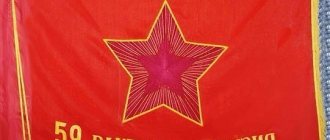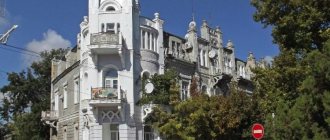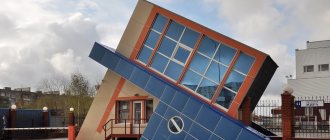Administration of the municipality "City of Dagestan Lights"
@font-face { font-family: "Als Ekibastuz Heavy";
src: url('https://pos.gosuslugi.ru/bin/banner/als_ekibastuz_heavy-webfont.woff2') format("woff2"), url('https://pos.gosuslugi.ru/bin/banner/ als_ekibastuz_heavy-webfont.woff') format("woff"); font-weight: normal; font-style: normal; } :root { --pos-banner-width: 100%; —pos-banner-height: 100%; —pos-banner-padding: 10px; —pos-banner-title-size: 24px; —pos-banner-title-align: center; —pos-banner-bg-size: 70%; —pos-banner-bg-pos-x: left; } #pos-container-width { width: 100%; max-width: 400px; min-width: 200px; min-height: 300px; display: block; background-color: transparent; } #pos-container-height { position: relative; width: 100%; height: 0; padding-bottom: calc(600px - 100%); display: block; background-color: transparent; } #pos-banner { position: absolute; top: 0; right: 0; bottom: 0; left: 0; width: var(-pos-banner-width); height: var(-pos-banner-height); min-height: 300px; background-image: url('https://pos.gosuslugi.ru/bin/banner/pos-bg-min.png'); background-repeat: no-repeat; display: flex; flex-direction: column; justify-content: flex-end; padding-left: var(-pos-banner-padding); padding-right: var(-pos-banner-padding); padding-bottom: 25px; box-sizing: border-box; background-color: #e3e8ec !important; background-size: var(—pos-banner-bg-size); background-position-x: var(-pos-banner-bg-pos-x); } #pos-banner-icon { background-image: url('https://pos.gosuslugi.ru/bin/banner/pos-gos-logo.png'); width: 130px; height: 130px; background-repeat: no-repeat; background-position: center; align-self: flex-end; background-color: transparent; } .pos-banner-btn { font-family: "Arial", sans-serif; padding: 10px; width: 100%; max-width: 290px; text-align: center; background: #0063b0 !important; color: white !important; border-radius: 4px; margin-top: 20px; align-self: center; box-sizing: border-box; cursor: pointer; user-select: none; font-size: 15px !important; font-weight: normal !important; line-height: 1.2 !important; } #pos-banner-title { font-family: “Als Ekibastuz Heavy”, sans-serif; color: #0063b0 !important; font-style: normal; font-weight: bold; text-align: var(-pos-banner-title-align); font-size: var(—pos-banner-title-size) !important; background-color: transparent; line-height: 1.2 !important; } .pos-banner-title-item { display: inline-block; background-color: transparent !important; font-size: var(—pos-banner-title-size) !important; font-weight: bold !important; line-height: 1.2 !important; } #pos-banner-hint-icon { font-family: "Arial", sans-serif; background-color: white !important; width: 22px; height: 22px; border: 1px solid grey; border-radius: 50%; text-align: center; padding: -2px; box-sizing: border-box; display: flex; justify-content: center; cursor: pointer; position: absolute; right: 10px; top: 20px; font-size: 12px !important; align-items: center; font-weight: bold; color: black !important; } #pos-banner-hint-icon-item { background-color: transparent; font-weight: normal; font-size: 14px; } #pos-banner-hint-message { font-family: "Arial", sans-serif; font-size: 11px !important; font-weight: normal !important; display: none; position: absolute; right: 5px; top: 55px; background-color: white; width: 85%; padding: 10px; box-shadow: 0 0 6px rgba(0, 0, 0, 0.2); color: black !important; line-height: 1.2; } #pos-banner-hint-message::after { content: ""; position: absolute; width: 10px; height: 10px; background: #ffffff; border-radius: 1px; transform: matrix(-0.7, -0.8, 0.63, -0.7, 0, 0); top: -5px; right: 10px; } #pos-banner-hint-icon:hover ~ #pos-banner-hint-message { display: block; animation: fadeInFromNone 0.5s ease-out; } @keyframes fadeInFromNone { 0% { display: none; opacity: 0; } 1% { display: block; opacity: 0; } 100% { display: block; opacity: 1; } } ? The messages sent are not appeals from citizens considered in the manner established by Federal Law No. 59-FZ of May 2, 2006 “On the procedure for considering appeals from citizens of the Russian Federation.”
Tell >about the problem
Write a message
let root = document.documentElement; let banner = document.getElementById("pos-banner"); function displayWindowSize() { let width = banner.offsetWidth; if (width
Lights of the future
The history of the city with the most unusual name in Dagestan meant that it would be different from its peers from the very beginning. Mysterious flashes of fire rising from the ground, covered since time immemorial with legends of conquerors, became the reason for interest in the area at the beginning of the twentieth century, when the Astrakhan merchants Malyshevs came here, and, having rented 10 hectares of land from the Derbent khan, began building a glass factory ...
This beginning, of course, sets the stage for the story to smoothly flow into the history of the creation here of an industrial supergiant like the American Detroit, where you can only work exhaustingly, earning your daily bread with blood and sweat. However, when entering this town, nothing like this can be noticed. On the walls of the glass factory there is still a congratulatory word from Felix Edmundovich Dzerzhinsky , from which we learn that the Dagestan Lights glass factory “Dagsteklo” is the first mechanized factory in the USSR. New technologies, in fact, started from here and spread throughout the Union, and the plant’s products, both industrial and finer, “gift” ones, became exemplary for many years. And today, when the plant’s production facilities employ several hundred people, in fact (which is traditional for single-industry towns built around a city-forming enterprise), it is the main source of jobs, it would be wrong to say that this pretty town lives only by the plant... this is what we found out a little bit later.
Ability to negotiate
Walking along its quiet Friday streets, you catch yourself thinking that, in general, there is nothing here except roads that are familiar to the Dagestan eye, dead after the rain, unusual barracks built back in Soviet times and some feeling of returning to the 90s. e. The actively reconstructed city square, a neat children's playground with benches, park areas where you can have a good rest on a fine summer day, hint that the city is being renewed, but its real diamonds are not yet visible...
The seed for revealing the beauty of the town was an eight-story house that stood out on one of the streets, built as part of a program for relocating dilapidated housing by a local construction company.
Developer Shamsutdin Gamzaev notes that the house solved problems for 44 families: “This house has an interesting destiny. For many years, several city leaders could not provide the 33 Ogninsk families with apartments under the program of relocation from dilapidated and dilapidated housing. Various reasons were given here, but this did not make people feel any better. About two years ago, when the city was headed by Zeidulla Khizrievich Gashimov , he promised these people that he would definitely solve their problem, and he kept his word. Together with the head of the Ministry of Construction of the Republic, he went to Moscow, to the Housing and Communal Services Reform Fund, where they managed to convince the Fund’s leadership of the need to help the young city. As a result, this program managed to provide housing for an additional 11 families. In Doug. There are still families in Ognye who need new housing, we will be ready to help - for example, 44 families and 123 people moved into this house, it was built in all respects as an elite one. But this is not the only social facility we have built in Ogni - there is also a school and a sports complex, and other facilities.”
Hello from the past
Thus, the renewal of the city that we saw gave us confidence that it has a future. Probably, it could not have been otherwise, because, as it turned out, the Ogninians have a very reverent attitude towards the past - the local historical museum, through the mouth of its director Chimnaz Mehdiyeva , told us about the milestones of history that connect the destinies of specific people with this city and with Dagestan as a whole. By the way, the Dagogninsky Museum was once recognized as the best school museum in the USSR.
The museum has gone through a lot, including difficult times. In the 90s, entire collections of bladed weapons, crystal and silver jewelry, which were collected bit by bit by many generations of schoolchildren on countless expeditions, were looted. Now the situation is completely opposite. Two years ago, the head of the city, Zeidulla Gashimov, presented the museum with a collection of collectible books, and when he was told that the premises here were rented from a private individual, the first thing he did was to provide the museum with a comfortable room for “European-quality renovation” with heating and round-the-clock security in the building of the Palace of Culture . Here are located, perhaps, one of the best in Yuzhdag kunatskaya and the Center for Traditional Culture.
The corner of one of the museum’s rooms is lined with posters with the history of the 345th Infantry Division, in whose honor a street is named in Derbent today and even has a monument. “We collected information about the division bit by bit. It all started with the fact that in the distant 70s, the city party committee assigned us the task of collecting information about the legendary Soviet journalist, a native of Derbent, Alexander Moiseevich Hamadan . You see here thematic posters, his biography, information about the combat path of the 345th division, the fate of which no one really knew until we took on this work. This is how we preserved our history, which we introduce to future generations,” says Chimnaz Zalbekovna.
While I’m listening to a fascinating story about various exhibits of the museum (including the flora and fauna of Dagestan), about the work of searching for information, plans to organize an analogue of the “immortal regiment”, a question is brewing in my head, which I still ask: “How interesting is this for modern youth and Dagestanis in general? Do people often visit your museum?” I expect the traditional retort in this situation that they used to treat history better, but now it’s not the same, but:
– You know, people need to be invited. We are contacting the department of culture and education, so that the relevant ministries inform educational institutions and during the year they plan visits to the museum for schoolchildren from all over Dagestan. There are enough visitors, but I know how to tell stories (smiles). So don't rush to leave, you won't learn much from what I can tell you!
Well, this is a professional answer from a man who really cares about his business, who once again proved that the main value of museums is not in the exhibits, but in the people. The kind that will definitely make you want to visit this museum again...
The cultural part of our trip did not end there, and the next stop was the concert hall of the local palace of culture, built in the Stalinist Empire style with 320 seats - according to a palace worker who introduced herself as Nailya , perhaps the only place where they can usefully spend their leisure time city residents: “Here we have very high-quality acoustics and lighting design - this is noted by everyone who comes here for performances. We hold various events and concerts on every calendar holiday, so it is filled to capacity every time. This building was transferred by the plant to the balance of the city in the 90s, and recently renovations were carried out here - you can see the result. Naturally, all this is thanks to the desire of the leadership of our mayor’s office and, probably, financial assistance from the federal budget as well.”
“Preserve, increase and make it better - it seems that this is the motto of Dagestan Lights,” I thought on the way. There are a lot of people here who care about their city. There are many people who appreciate what they have and work to make life more comfortable for adults and children...
Circus lights up
The more we waited for the main and, probably, the most unexpected event for anyone who is not a frequent guest of Dagestan Lights, an event that confirmed all the positive things from the trip - a meeting with the Republican School of Circus Arts, which will soon turn 50 years old. The director of the school is Abdulkerim Kurbanov , the son of its founder Kamil Kurbanov , who opened the Yunost circus studio at the glass factory back in 1968. “Later we were awarded the title of the People's Circus of Dagestan, on the basis of which we created a school in which today more than 200 children from 7 to 17 years study in several genres - two types of balancing act, gymnastics, acrobatics, athletics, clowning. If we talk about their level, these are ready-made artists who are already delighting local audiences with their performances,” sums up the school director.
When you think about how it happened that in the small village of Yuzhdagov (Ogni acquired the status of a city only in 1990) there was a place for such an exotic phenomenon for Dagestan as a circus, you get the feeling that Dagestan Lights is a completely different world, not similar to the standard one. Dagestan painting. What is surprising is that this world was built not only by the Russians who came here, but also by our compatriots, such as Kamil Kurbanov, who brought his love for the circus here from Kiev and, armed with enthusiasm, began to develop this direction, which is still alive today, despite all the difficulties. But where did this enthusiasm come from?
The editor-in-chief of a local publication, the famous Dagestani journalist Magomed Khanmagomedov, who accompanied us on the hike, tried to answer this question: “Our village was originally Russian in ethnic composition, and those Dagestanis who moved here tried to absorb Russian culture, not to lag behind the locals in any way. level of intelligence, education, or any other indicators. This desire to “not fall behind” encouraged people like Kamil Kurbanov to make maximum efforts in their field. We can say that it was such an unspoken competition, a desire to meet the level in education, culture and any other area.”
The circus school also has its own museum, where you can learn about its history, circus equipment and much more.
Pupils of the school performed at international competitions of folk art groups in Germany, France, Spain, Finland, Bulgaria and other countries of the world, as well as at republican and international folklore circus art competitions. The school can also boast of a world-class graduate - now a tightrope walker of the Moscow Circus, Honored Artist of the Russian Federation Aina Ibragimova.
Records, records...
Cultural achievements are dictated not only by circus successes, but also by the hands of craftsmen. “A carpet of the highest quality and artistic execution with an area of 25.2 square meters, a density of 46 knots per dm2, dedicated to the 2000th anniversary of Derbent, was woven by 8 carpet weavers over 480 days, i.e. one year and four months. In total there are 5 million 353 thousand 480 knots, and the product weighs more than 70 kilograms! On the territory of modern Russia, no one else has done anything like this, but on our carpet the craftsmen managed to place an image of an entire city!” – the media admired the product. This was yet another evidence that a small Dagestan town can surprise even those who have never been there - the land here is full not only of resources, but also of human talents.
For the benefit of the Dagestanis
Having visited the main cultural points of Dagestan Lights, we could not ignore the one under whose leadership the city is being so rapidly transformed today. The head of the Dagestan Lights city district, Zeidulla Gashimov, met us at our workplace and, over a cup of tea, told us about the effort required by the work we were witnessing.
“When the government apparatus of the republic invited me to head the city district, I assured the management that I would cope with the job, despite all the difficulties that I would have to face. And the fact that there would be a lot of work became clear even when I first toured the city in my new status, when I learned about the city’s debt of 165 million, abandoned facilities (an unfinished school and clinic), the low level of asphalted roads, problems with sewerage, lack of treatment facilities.
One of the most pressing problems that the city faced quite recently and which, fortunately, the residents of Ognnitsy have already begun to forget about, is the catastrophic lack of voltage in the electrical network. Imagine that with the onset of twilight, children could not do their homework, household appliances practically did not work, people could not watch TV in peace in the evening. We installed several transformers and laid 4.5 km of new electrical networks - this has radically changed the situation with energy supply in the city, and the voltage now sometimes even exceeds the required norm, but just a year and a half ago, 120 volts in an outlet was the norm!
It was necessary to work hard and make sure that the city lived up to its status. In conditions of financial difficulties, we had to attract investors and get out, having pennies in the budget. But, as you can see, things have moved from a dead point. We started by building so-called centers of well-being; the reconstruction of the city square is already nearing completion. I'm sure it will become one of the iconic places in the city. Even earlier, we commissioned a children's playground, improvement work on Polevaya Street is in full swing - the townspeople have identified it as the main one - it will be a very beautiful street with sidewalks, asphalt pavement, night lighting, etc. Although there are still many problems, and, as head cities, I do not deny this, the important thing is that we are aimed at solving them,” sums up Zeidulla Gashimov.
Gashimov’s economic strategy is largely aimed at global investors, whom he attracts through the Integrated Development of Single-Industry Towns program; 150 hectares of land have already been allocated for these purposes. “The main objective of the program is to move away from single-industry occupations and to restructure jobs, the shortage of which today faces many single-industry towns in the country that depend on their city-forming enterprises. We are tasked with creating 920 additional jobs here by 2022. We have already created 560,” notes the mayor. Plus the help of investors and a chance to be included in the list of territories of priority socio-economic development (PSED). This is a potential long-term tax exemption and makes it easier to raise investment money.
The program provides favorable conditions for business to create an industrial park with the necessary communications. In particular, in Dagestanskie Ogni it is planned to build cartoning and juice factories, as well as enterprises for the production of liquid glass and glass products. Naturally, against the backdrop of this synergy, small and medium-sized businesses will also earn differently; this will give them an additional incentive for growth.
Gashimov also notes existing problems with financing: Zeidulla Khizrievich is confident that the work being carried out by the administration will transform the city in the near future - a maximum of a year or two, after which Dagestan Lights will officially become the “gateway to Yuzhdag.”
The city's potential is enormous. We have convinced ourselves of this.
Come too.










